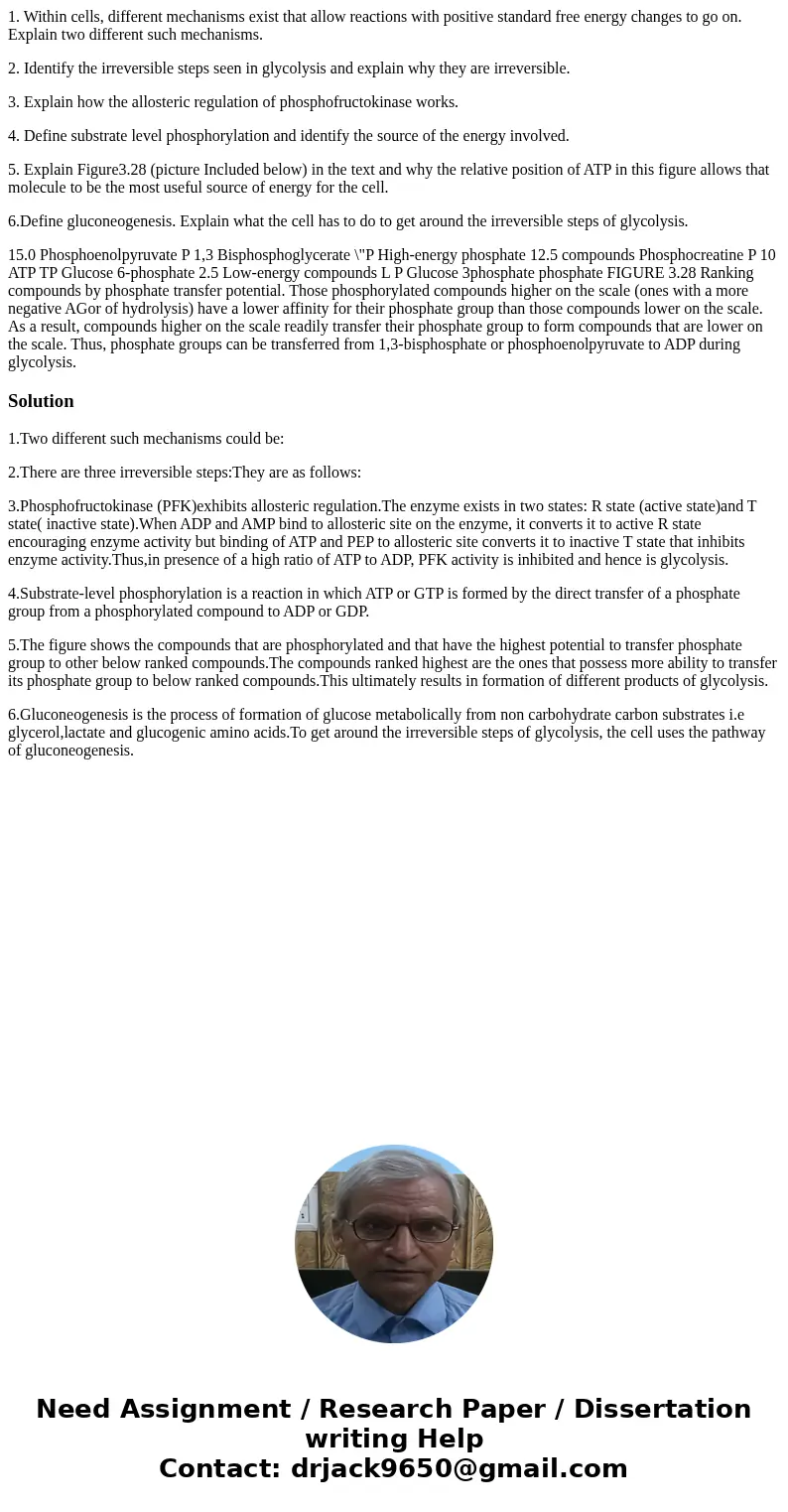1 Within cells different mechanisms exist that allow reactio
1. Within cells, different mechanisms exist that allow reactions with positive standard free energy changes to go on. Explain two different such mechanisms.
2. Identify the irreversible steps seen in glycolysis and explain why they are irreversible.
3. Explain how the allosteric regulation of phosphofructokinase works.
4. Define substrate level phosphorylation and identify the source of the energy involved.
5. Explain Figure3.28 (picture Included below) in the text and why the relative position of ATP in this figure allows that molecule to be the most useful source of energy for the cell.
6.Define gluconeogenesis. Explain what the cell has to do to get around the irreversible steps of glycolysis.
15.0 Phosphoenolpyruvate P 1,3 Bisphosphoglycerate \"P High-energy phosphate 12.5 compounds Phosphocreatine P 10 ATP TP Glucose 6-phosphate 2.5 Low-energy compounds L P Glucose 3phosphate phosphate FIGURE 3.28 Ranking compounds by phosphate transfer potential. Those phosphorylated compounds higher on the scale (ones with a more negative AGor of hydrolysis) have a lower affinity for their phosphate group than those compounds lower on the scale. As a result, compounds higher on the scale readily transfer their phosphate group to form compounds that are lower on the scale. Thus, phosphate groups can be transferred from 1,3-bisphosphate or phosphoenolpyruvate to ADP during glycolysis.Solution
1.Two different such mechanisms could be:
2.There are three irreversible steps:They are as follows:
3.Phosphofructokinase (PFK)exhibits allosteric regulation.The enzyme exists in two states: R state (active state)and T state( inactive state).When ADP and AMP bind to allosteric site on the enzyme, it converts it to active R state encouraging enzyme activity but binding of ATP and PEP to allosteric site converts it to inactive T state that inhibits enzyme activity.Thus,in presence of a high ratio of ATP to ADP, PFK activity is inhibited and hence is glycolysis.
4.Substrate-level phosphorylation is a reaction in which ATP or GTP is formed by the direct transfer of a phosphate group from a phosphorylated compound to ADP or GDP.
5.The figure shows the compounds that are phosphorylated and that have the highest potential to transfer phosphate group to other below ranked compounds.The compounds ranked highest are the ones that possess more ability to transfer its phosphate group to below ranked compounds.This ultimately results in formation of different products of glycolysis.
6.Gluconeogenesis is the process of formation of glucose metabolically from non carbohydrate carbon substrates i.e glycerol,lactate and glucogenic amino acids.To get around the irreversible steps of glycolysis, the cell uses the pathway of gluconeogenesis.

 Homework Sourse
Homework Sourse